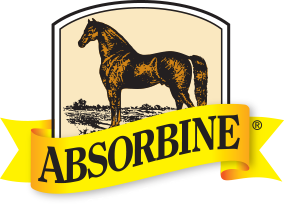 Hoof Nutrition Intelligence is a twice-a-month web segment that is designed to add to the education of footcare professionals when it comes to effectively feeding the hoof. The goal of this web-exclusive feature is to zero in on specific areas of hoof nutrition and avoid broad-based articles that simply look at the overall equine feeding situation.
Hoof Nutrition Intelligence is a twice-a-month web segment that is designed to add to the education of footcare professionals when it comes to effectively feeding the hoof. The goal of this web-exclusive feature is to zero in on specific areas of hoof nutrition and avoid broad-based articles that simply look at the overall equine feeding situation.
Below you will find the latest question and answer installment that you can share with your footcare clients.
Q: With my mare that has a history of laminitis, can I feed whole oats?
By J. Frank Gravlee, DVM, MS, CNS, and Scott Gravlee, DVM, CNS, Life Data Labs
A: For centuries, feeding oats to working horses was common. But as compounded feeds were developed, owners were advised not to feed oats. Yet oats are finding a resurgence in popularity today as research has once again established oats as a healthy feed for horse while conventional compounded feeds containing byproducts have been implicated as creating nutrient interferences due to the high phytate(phosphorus) content.
Laminitis and colic often result from undigested starch entering the caecum of the horse where it is broken down and fermented by microbes. Along with alternations in gut flora, this fermentation process produces the toxins that enter the bloodstream and damage the sensitive blood vessels within the hoof.
There’s increasing awareness that horse owners can safely feed whole oats to their horses since the starch in oats is highly digestible. This starch is quickly broken down into sugars in the small intestine, which are usually absorbed long before reaching the caecum
While oats are highly palatable, they contain less starch and are higher in fat than other grains. They also offer superior amino acid content and retain their nutrient quality for a long storage life.
While changing a horse’s diet, avoid sudden adjustments. Gradually replace the current feed with whole oats so the transition is completed in about 10 days. Add a supplement to balance the hay or pasture diet and feed whole oats if necessary as a calorie source to maintain body condition.
Feeding whole oats requires the horse to use its teeth as a grinder, which not only helps to maintain proper dental health and reduce dental spurs, but improves feed digestibility and reduces gastric ulcers by stimulating salivation.
Frank Gravlee and Scott Gravlee are veterinarians and equine nutritionists at Life Data Labs, Inc.in Cherokee, Ala.
Hoof Nutrition Intelligence is brought to you by W.F. Young Co. (Absorbine). 
Like many significant achievements, Absorbine® grew out of humble beginnings—and through the tenacity of someone willing to question the status quo. In this case, it was a young woman in late 19th-century Massachusetts: Mary Ida Young. Her husband, Wilbur Fenelon Young, was an enterprising piano deliveryman who relied on the couple’s team of horses to make deliveries throughout the Northeast. Inspired by Mary Ida and Wilbur’s vision, Absorbine® has continued to add innovative products throughout the years — products used every day by horse owners around the world. Which is why, since 1892, we’ve been The Horse World’s Most Trusted Name®.
Click here to read more installments of Hoof Nutrition Intelligence.

Post a comment
Report Abusive Comment